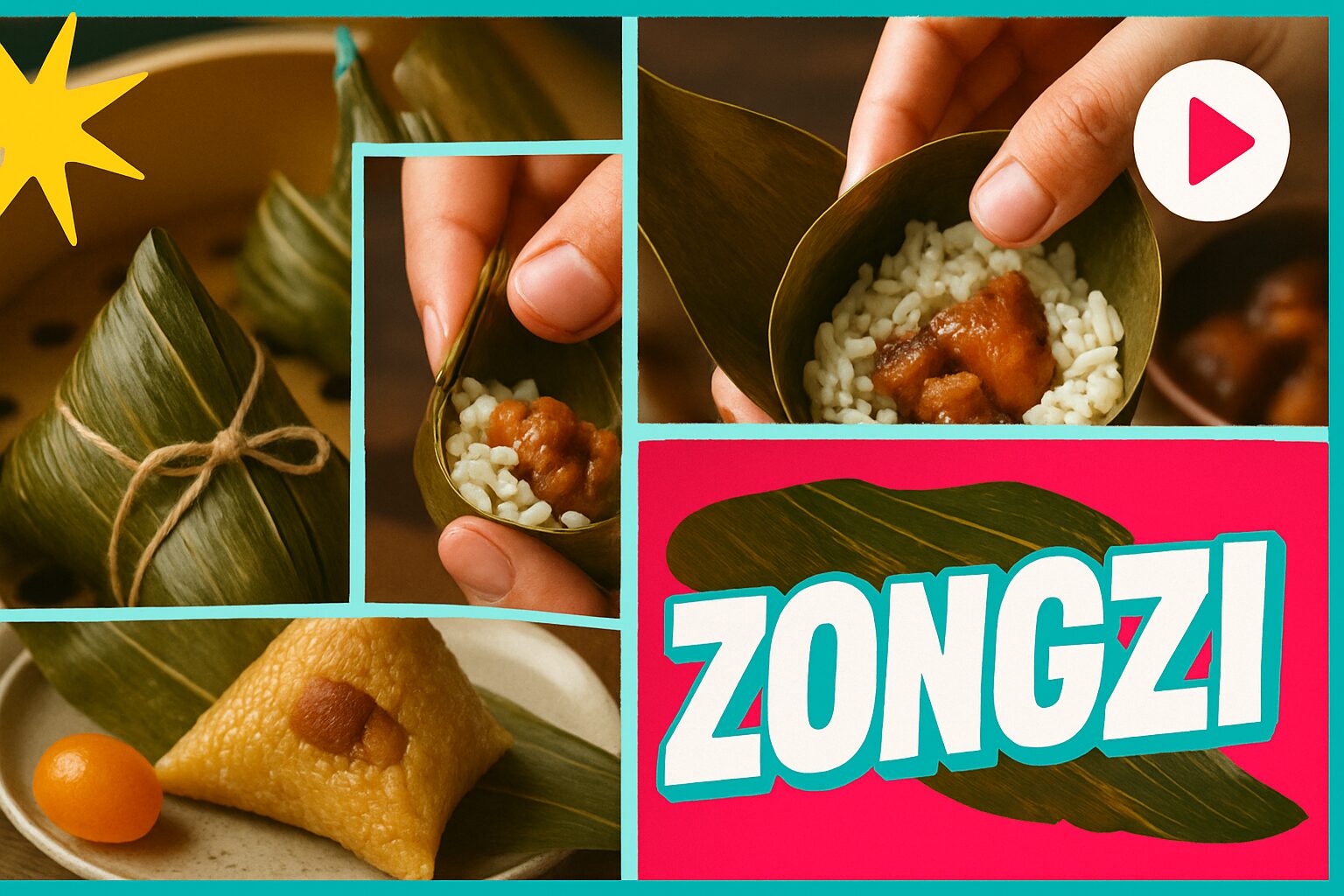Zongzi, the sticky rice dumplings central to the Dragon Boat Festival, have transcended their traditional roots to become a global culinary sensation. These delicacies, wrapped in bamboo leaves and filled with a variety of sweet or savory ingredients, are now among the most searched food trends on Google during the festival season. Their intricate preparation and rich flavors captivate food enthusiasts worldwide, offering a taste of Chinese heritage with every bite. What once was a ritual meal to honor the poet Qu Yuan is now a viral symbol of tradition meeting taste. As consumers crave authenticity, few foods deliver it as satisfyingly as a well-made Zongzi.
Trend Snapshot / Factbox
| Aspect | Details |
|---|---|
| Trend name and brief definition | Zongzi Trend – Traditional Chinese sticky rice dumplings wrapped in bamboo leaves |
| Main ingredients or key components | Glutinous rice, bamboo leaves, fillings like pork belly, salted egg yolk, red bean paste |
| Current distribution (where can you find this trend now?) | Widely available across China, Chinatowns worldwide, specialty Asian grocers, gourmet markets |
| Well-known restaurants or products currently embodying this trend | Din Tai Fung, Tim Ho Wan, Crystal Jade, plus boutique dumpling makers on Instagram and WeChat |
| Relevant hashtags and social media presence | #Zongzi #DragonBoatFestival #StickyRice #FoodCulture #BambooWrapped |
| Target demographics (who mainly consumes this trend?) | Food enthusiasts, cultural explorers, Gen Z trend-seekers, Chinese diaspora families |
| “Wow factor” or special feature of the trend | Labor-intensive hand wrapping, regional flavor diversity, cultural symbolism |
| Trend phase (emerging, peak, declining) | Peak – major seasonal spike with sustained interest on social platforms |
The Essence of Zongzi
At its core, Zongzi is deceptively simple: sticky (glutinous) rice packed with fillings, wrapped in leaves, then steamed or boiled. But the true beauty lies in its balance of flavor, texture, and symbolism. The glutinous rice, sticky by nature, is symbolic of cohesion and familial closeness—a key theme during the Dragon Boat Festival. Fillings range widely: pork belly, mushroom, and salted egg yolk dominate in southern China, while jujube and red bean paste appear more often in the north.
Each component carries cultural meaning. The bamboo leaves offer an earthy aroma and act as natural wrappers, while the choice of filling reflects regional tastes and agricultural availability. Preparing Zongzi is a tactile, time-consuming process. It often brings families together around the table to clean leaves, soak rice, and fold each parcel by hand. It is this communal aspect—blending craftsmanship and care—that makes Zongzi so much more than just food.
Crafting the Perfect Zongzi
Making Zongzi is part culinary technique, part ritual. First, the bamboo or reed leaves must be washed and softened. Then, glutinous rice is soaked and seasoned. Fillings are pre-cooked, whether savory chunks of braised pork or smooth sweet bean pastes. The art lies in the wrapping: the leaf must be folded into a tight cone, filled with the right amount of rice and filling, then folded and tied firmly to withstand hours of boiling.
Many home cooks pass down folding techniques through generations, and mastering the triangle or pillow shape is a skill in itself. Cooking takes several hours, with boiling being the traditional method, though steaming has become more common for better flavor preservation. The final product is fragrant, sticky, and complex in flavor.
Want to try it yourself? Watch this step-by-step video tutorial:
Regional Flavors and Variations
No two Zongzi are exactly the same, and the dish’s regional diversity is astounding. In southern China, savory fillings reign: fatty pork belly, salted duck egg yolks, and shiitake mushrooms are encased in dark-soy-seasoned rice. In contrast, northern varieties lean sweet—red bean paste, lotus seeds, and dried jujubes, all wrapped in plain or lightly sweetened rice.
Some regional standouts include Cantonese-style Zongzi, which are massive and often include mung beans, dried scallops, and chestnuts. Hunan-style versions might be spicy and rich, reflecting local flavor preferences. Even in Taiwan, recipes have adapted, using ingredients like taro and peanut to differentiate their offerings. The diaspora communities across Southeast Asia also put their own spin on Zongzi, adding coconut milk or pandan flavors.
This regionalism keeps the tradition alive and evolving—offering endless opportunities for taste exploration.
Zongzi in the Modern Culinary Scene
Zongzi has officially broken out of the cultural niche. In recent years, Michelin-listed restaurants and upscale brands have elevated Zongzi into gourmet territory. Expect to see Zongzi with black truffle paste, foie gras centers, or encased in gold-dusted bamboo leaves—luxury spins that honor the original while appealing to a high-end market.
Chinese bakeries and e-commerce platforms often release special-edition Zongzi gift boxes during the festival. These beautifully packaged sets are popular among urban professionals looking for both authenticity and aesthetics. Social media further fuels the demand—Zongzi unwrapping videos are oddly satisfying and often go viral for their intricate folds and glossy, glutinous textures.
More importantly, the craft of making Zongzi is being rediscovered by younger generations. Gen Z foodies are embracing the ritual, posting their DIY wrapping efforts and celebrating the sensory satisfaction of making something slow, deliberate, and meaningful. It’s the culinary equivalent of slow fashion—intentional, heritage-rich, and deeply personal.
Sticky Rice, Sticky Memories
In a world of fleeting food trends, Zongzi’s seasonal return feels like a grounding force. It reconnects people to their cultural past while letting them savor something deeply flavorful in the present. For many, it is a reminder of childhood, of grandparents’ kitchens, and of traditions that matter.
As the global food scene grows increasingly fascinated with authenticity, Zongzi stands tall—not as a relic, but as a resilient, evolving dish. It’s proof that tradition and trend are not opposites; they’re ingredients in the same recipe.

